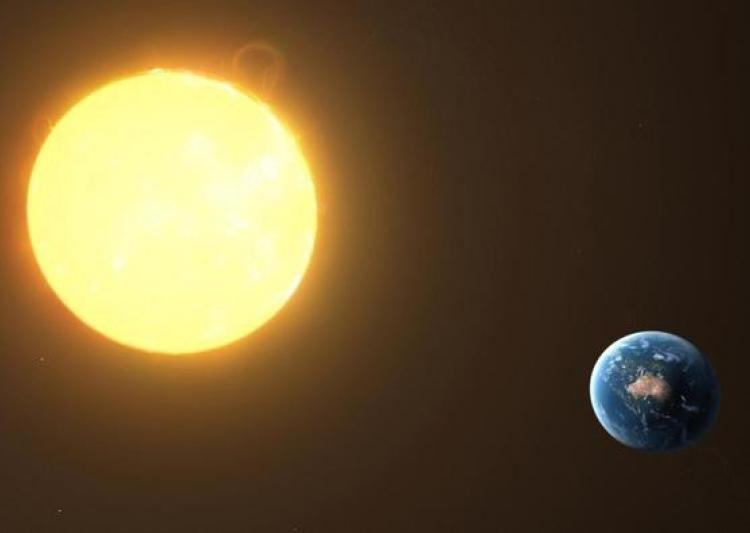Earth farthest to the Sun today
Tue 04 Jul 2017, 13:00:27

For amateur astronomers of Hyderabad, Tuesday marks an important event in their annual calendar of planetary gazing. On July 4, planet earth will be at the farthest point to the sun in its elliptical orbit.
According to the Planetary Society of India (PSI), the celestial phenomenon, known as Aphelion, is considered to be a milestone in earth’s journey around the sun. “On this day, the earth reaches to the farthest point with respect to the sun, which is generally not known to many,” says Raghunandan Kumar, Director and Founder Secretary of PSI.
According to PSI, the earth at its extreme point will be positioned at a distance of 1.016AU (Astronomical Units) ie 15, 20, 92, 504 km or approximately 152 million
km from the sun in 2017.It is expected to receive 7 per cent less sunlight at Aphelion when compared to perihelion when it is closest to the sun.
km from the sun in 2017.It is expected to receive 7 per cent less sunlight at Aphelion when compared to perihelion when it is closest to the sun.
The farthest and closest movement of the earth, however, is not the reason for the change in season and temperature.
“The rise and fall in temperature or season regulation is completely based on the axial tilt of the earth while revolving around the sun with one of the hemisphere facing away or towards the sun. The tilt of the North Pole towards the sun causes summer in areas that are north of the equator, while summer in the south of the equator arrives after six months when there is a tilt in the South Pole towards the sun,” Kumar added.
No Comments For This Post, Be first to write a Comment.
Most viewed from Specials
Most viewed from World
AIMIM News
Latest Urdu News
Most Viewed
May 26, 2020
Where should be the burial of the pilgrims martyred in the Saudi Arabia bus accident?
Latest Videos View All
Like Us
Home
About Us
Advertise With Us
All Polls
Epaper Archives
Privacy Policy
Contact Us
Download Etemaad App
© 2025 Etemaad Daily News, All Rights Reserved.





































.jpg)
.jpg)
.jpg)


